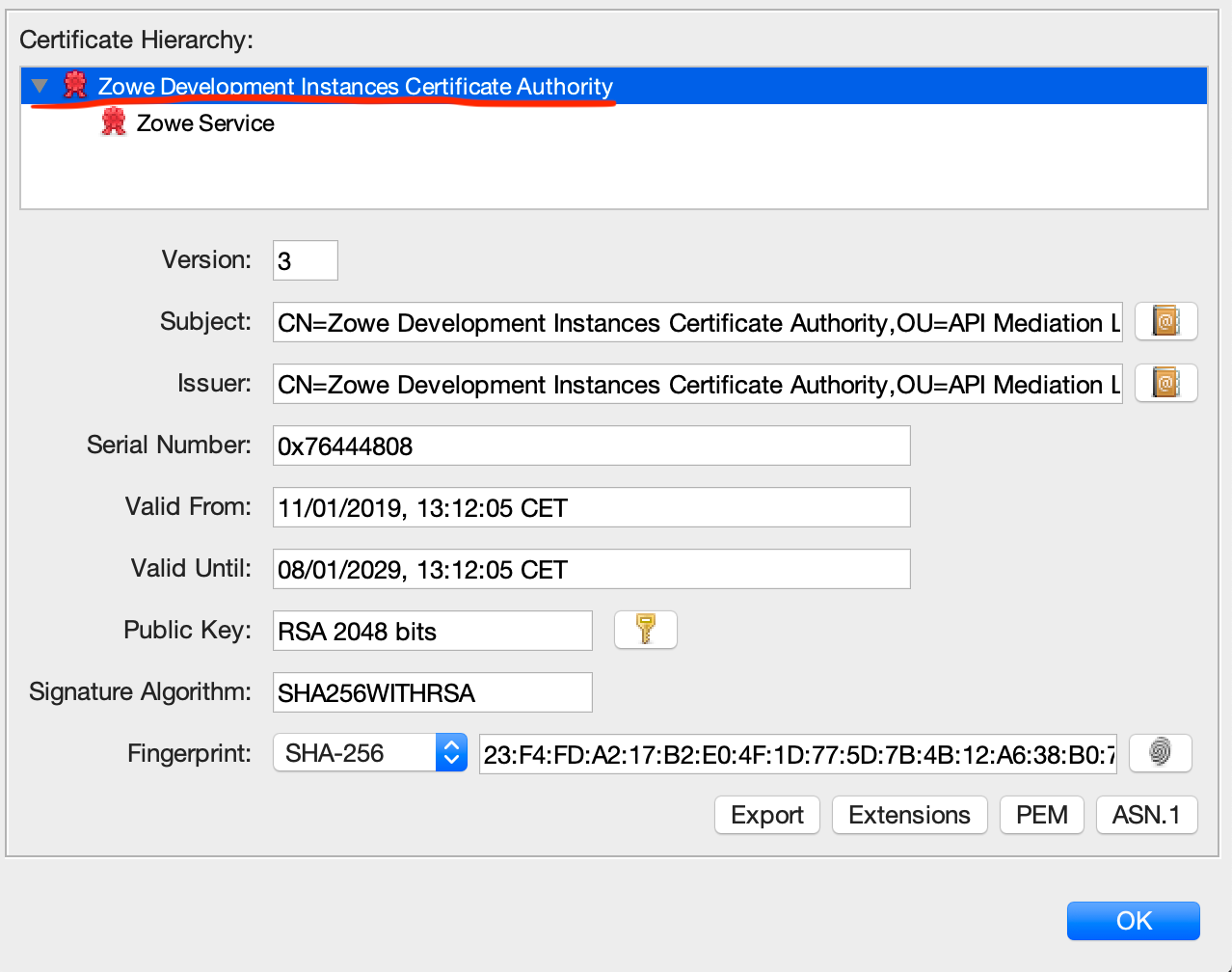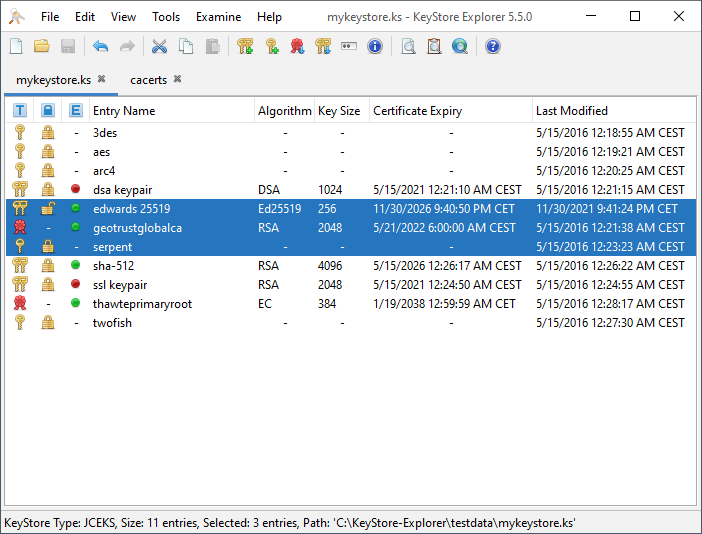
- KEYSTORE EXPLORER ENTRYNAME SERIAL NUMBER
- KEYSTORE EXPLORER ENTRYNAME SOFTWARE
- KEYSTORE EXPLORER ENTRYNAME PASSWORD
N8X2DWG4kwEYiAqKi7bNi6oCCN9wztzdBRvhjxMsxjY92bW88S9Tm6DcI9TryFwB ZNghDKafDQXD5yhDxVAC93mqvllkSlORycyWu7NaiMVaNjev8wgqsvMqtWvZU0Dh RsqiqTBrDZDB82Swf1AsX7yknbJKDFLyNw2ODOJeLgasQe6nPy7c5qD6XwEIorQb HcR0cUwS59/1V519zoDHKu2wUKNKVxsdrEQ0UA5ebtO0C9+efH45cjvq+zG+SNNk MB4XDTIxMTIyMTIzMDAwMFoXDTIxMTIyMTIzMDAwMFowETEPMA0GA1UEAwwGc2FtĬGxlMIIBIjANBgkqhkiG9w0BAQEFAAOCAQ8AMIIBCgKCAQEAq3xaMi3KGAzjzKHnĠAyMLdOgK87fIvyP7oKb2B36HjQBKfFY427aSc38k7qVi0sRQr2Gf6RgJCJZLM02 MIICmTCCAYECBF/h2ZgwDQYJKoZIhvcNAQELBQAwETEPMA0GA1UEAwwGc2FtcGxl
KEYSTORE EXPLORER ENTRYNAME SOFTWARE
SPC Software Publisher Certificate, Microsoft's certificate format.PKCS #7 RSA public key cryptography standard.X.509 ITU-T standard for public key infrastructure.

The X.509 export format is not available when the entire chain is to be exported. Use the Export Length radio buttons to choose whether the Entire Chain of certificates should be exported or the Head Only.Export certificate chain dialog will apear.
KEYSTORE EXPLORER ENTRYNAME PASSWORD
Enter the Key Pair entry's password and press the
KEYSTORE EXPLORER ENTRYNAME SERIAL NUMBER
Select a Version and Signature Algorithm and enter a Validity Period, Serial Number and Name. EC: Elliptic-curve cryptography (ECC) is an approach to public-key cryptography based on the algebraic structure of elliptic curves over finite fields.The DSA private key is used to generate digital signatures, and the DSA public key is used to verify digital signatures. The RSA public key is also used for key encryption of DES or AES DATA keys and the RSA private key for key recovery.Ī DSA key pair also includes a private and a public key. The RSA private key is used to generate digital signatures, and the RSA public key is used to verify digital signatures. You can chose one of the following algorithms:Īn RSA key pair includes a private and a public key. Select an Algorithm and a Key Size and press the OK button. Enter the alias for the new Key Pair entry and password, then press the The Generate Key Pair dialog will be displayed. Key entries can be deleted.įrom the Keystore page toolbar, click on actions and choose Key Pair entries can additionally have their passwords set, be used to generate CSRs, etc. The options available in the pop-up menu differ depending on the KeyStore entry type.įor example, Trusted Certificate entries can be examined, deleted or renamed. Operations specific to a KeyStore entry can be accessed selecting the specific entry in the table and selecting the required operation from the top right buttons. Last Modified: Entry's last modification date and time.Certificate Expiry: Entry's certificate expiry date and time.Certificate Expiry not before: Entry's certificate start date.Certificate Expiry Status: Unexpired or Expired for Trusted Certificate and Key Pair entries.Lock Status: Locked or Unlocked for Key Pair entries.Type: Key Pair is represented with a key icon, Certificate is represented with a document icon.The entries contained within the currently active KeyStore are displayed as a table with the following columns:

To know more about certificates and their terminology visit this Private keys are used to compute signatures.Īn entity is a person, organization, program, computer, business, bank, or something else you are trusting to some degree. In a typical public key crypto system, such as DSA, a private key corresponds to exactly one public key. Private and public keys exist in pairs in all public key cryptography systems (also referred to as " public key crypto systems"). These are numbers, each of which is supposed to be known only to the particular entity whose private key it is (that is, it's supposed to be kept secret).

In some systems the identity is the public key, in others it can be anything from a Unix UID to an Email address to an X.509 Distinguished Name.Ī signature is computed over some data using the private key of an entity (the signer, which in the case of a certificate is also known as the issuer). The data is rendered unforgeable by signing with the entity's private key.Ī known way of addressing an entity. If some data is digitally signed it has been stored with the "identity" of an entity, and a signature that proves that entity knows about the data. Public keys are used to verify signatures. These are numbers associated with a particular entity, and are intended to be known to everyone who needs to have trusted interactions with that entity.


 0 kommentar(er)
0 kommentar(er)
